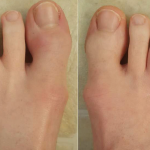 In late 2021, the U.S. Food and Drug Administration (FDA) approved secukinumab (Cosentyx) to treat two conditions in pediatric rheumatology patients: active enthesitis-related arthritis in patients aged four years and older and psoriatic arthritis (PsA) in patients aged 2 years and older.1 Secukinumab is a human IgG1κ monoclonal antibody that binds to interleukin-17A.
In late 2021, the U.S. Food and Drug Administration (FDA) approved secukinumab (Cosentyx) to treat two conditions in pediatric rheumatology patients: active enthesitis-related arthritis in patients aged four years and older and psoriatic arthritis (PsA) in patients aged 2 years and older.1 Secukinumab is a human IgG1κ monoclonal antibody that binds to interleukin-17A.
Background: The International League of Associations for Rheumatology divides juvenile idiopathic arthritis (JIA) into seven categories based on presentation within the first six months of illness.2 One category is enthesitis-related arthritis, which is an HLA-B27-related JIA characterized by the involvement of the entheses, peripheral joints and axial skeleton. ERA represents 10–16% of all patients with JIA. Compared with other categories of JIA, children with ERA tend to have higher disease activity, greater pain intensity and worse health outcomes. Achieving and maintaining inactive disease is also more difficult for patients with ERA than those in other JIA categories.
The Research
Results from the phase 3, double-blind, placebo-controlled JUNIPERA study were used for this FDA approval of secukinumab. In this two-year, three-part study, researchers enrolled 86 children and adolescents aged 2–17 years old with a confirmed diagnosis of ERA or juvenile PsA.3 At baseline, patients were randomized to receive 75 mg of subcutaneous secukinumab if they weighed less than 50 kg and 150 mg if they weighed at least 50 kg. Patients also received this dose at weeks 1, 2, 3, 4, 8 and 12.
Next, the patients who achieved at least a 30% improvement from baseline in at least three of the six core JIA criteria (i.e., a JIA ACR 30 response) were randomized into the double-blind, placebo-controlled part of the study.
Patients in part 2 received either secukinumab or placebo every four weeks until they experienced disease flare or reached week 100. The primary end point was the time to disease flare. Key secondary end points (e.g., JIA ACR 30, 50, 70, 90, 100, inactive disease, JADAS, enthesitis) were also evaluated, as well as drug safety.
The results: 97 patients were enrolled in the original open-label study, with a mean age of 13 years, with 33.7% of them being girls. Eighty-six of these patients entered into the randomized double-blind part of the study. Fifty-two of these patients had enthesitis-related arthritis, and 34 had juvenile PsA. At the end of part 1, 90% (75 of 83) of patients had achieved a JIA ACR 30 response, and 70% (58 of 83) had achieved a JIA ACR 70 response. (Note: The authors did not mention why the denominators for part 2 of the study were 83 vs. 86 patients.)
At the end of the study, patients with active juvenile PsA who received secukinumab had a significantly longer time to flare, with an 85% reduction in the risk of flare (P<.001) compared with those patients who received placebo. Patients with active ERA treated with secukinumab also had a longer time to flare, with a 53% reduction in the risk of flare compared with patients who received placebo. The patients treated with secukinumab had sustained improvements in signs and symptoms up to week 100.
No new safety signals were identified.
Michele B. Kaufman, PharmD, BCGP, is a freelance medical writer based in New York City and a pharmacist at New York Presbyterian Lower Manhattan Hospital.
References
- Novartis Cosentyx receives FDA approval for the treatment of children and adolescents with enthesitis-related arthritis and psoriatic arthritis. Novartis AG. 2021 Dec 23.
- Shih Y, Yang Y, Lin C, et al. Enthesitis-related arthritis is the most common category of juvenile idiopathic arthritis in Taiwan and presents persistent active disease. Pediatr Rheumatol Online J. 2019 Aug 23;17(1):58.
- Ruperto N, Foeldvari I, Alexeeva E, et al. Efficacy and safety of secukinumab in enthesitis-related arthritis and juvenile psoriatic arthritis: Primary results from a randomised, double-blind, placebo-controlled, treatment withdrawal, phase 3 study (JUNIPERA). Ann Rheum Dis. 2021;80:201–202.



